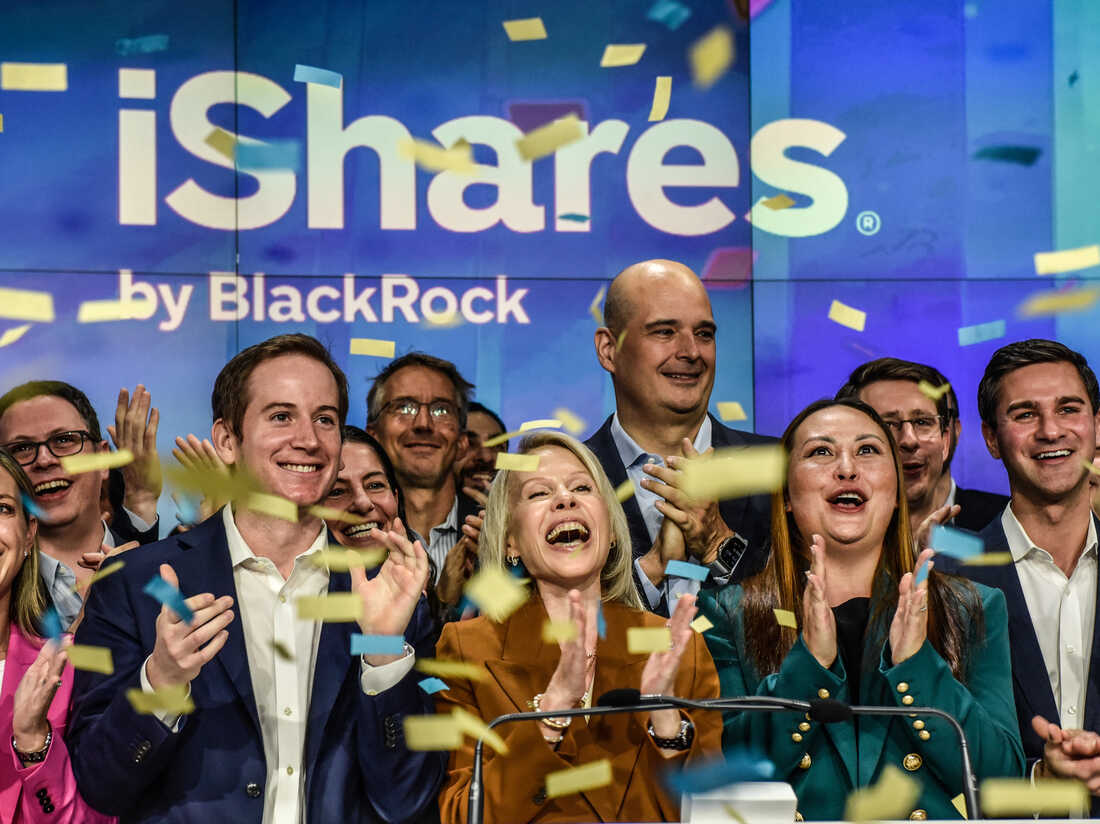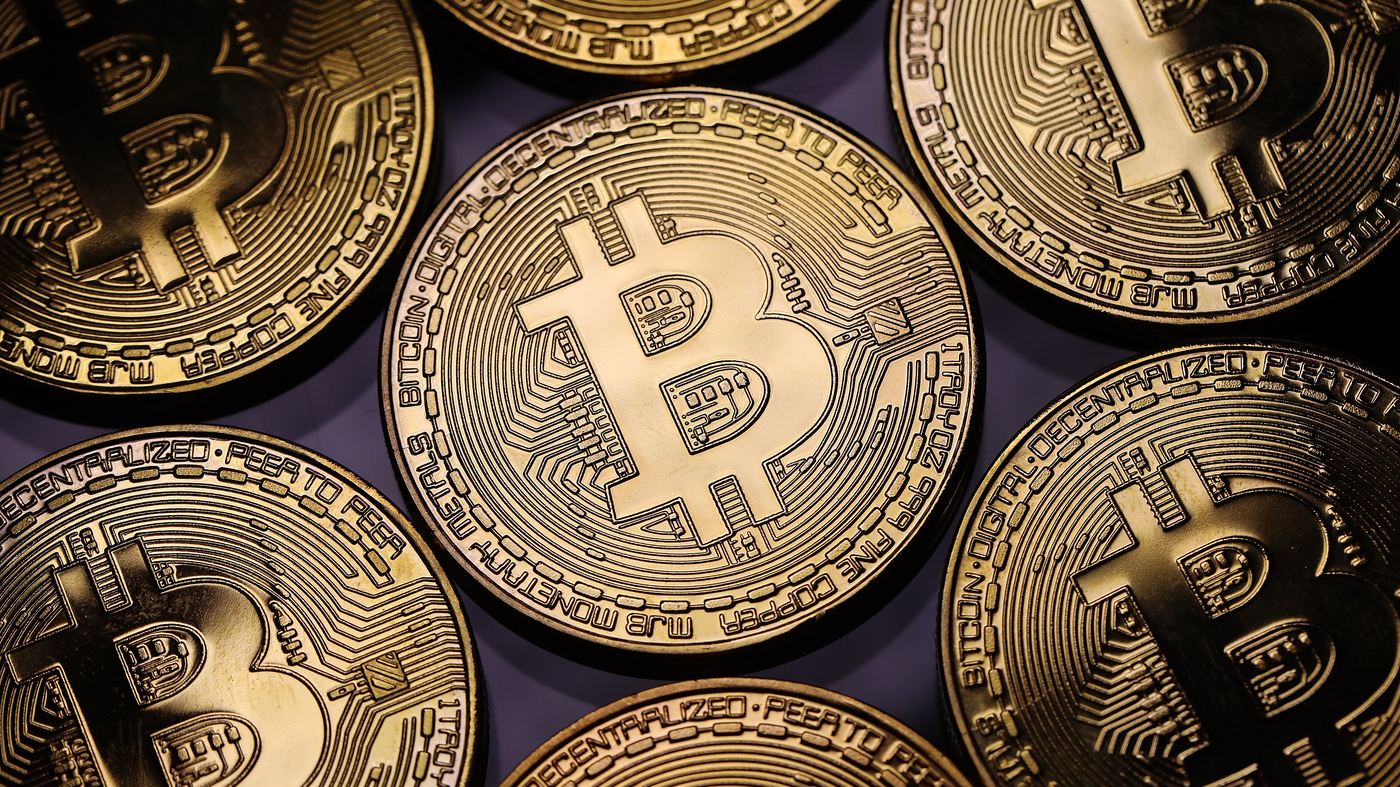The supply of new bitcoin is about to be effectively cut in half in an event called the halving. Some experts believe this could help lead to huge profits in the digital currency. Dan Kitwood/Getty Images hide caption
change caption
Dan Kitwood/Getty Images
The supply of new bitcoin is about to be effectively cut in half in an event called the halving. Some experts believe this could help lead to huge profits in the digital currency.
Dan Kitwood/Getty Images
A major event is about to happen in the world of bitcoin: It’s called the halving — and some experts believe it will spark a rally in the digital currency.

Broadly speaking, the halving effectively reduces the supply of new bitcoins. And that should presumably lead to higher prices. This is the scarcity principle. The fewer bitcoins that are mined, the more valuable bitcoin becomes.
But will it? And what does it all mean? Here’s what to know as the big day approaches.
What is the halving?
First the name. Few in the crypto world seem to like the name halving.
But it effectively describes what will happen.
And it all involves bitcoin mining.
Just like geological miners – from professionals to amateurs – who mine the earth to discover new diamonds or gold, bitcoin miners must discover something that is hidden. They solve very complicated mathematical formulas to reveal new bitcoins. (Or in crypto lingo, “a block” is created and then added to a virtual public bitcoin ledger called the blockchain)
Whoever solves the formula first gets a bunch of bitcoins as a prize. This is why miners try to compete in this race by building the most powerful computer networks they can.

A ‘Buy Bitcoin Here’ sign is posted at a 7-Eleven store in Los Angeles on November 10, 2021. How much the halving contributes to the gains in bitcoin is a subject of ongoing debate. Mario Tama/Getty Images hide caption
change caption
Mario Tama/Getty Images
A ‘Buy Bitcoin Here’ sign is posted at a 7-Eleven store in Los Angeles on November 10, 2021. How much the halving contributes to the gains in bitcoin is a subject of ongoing debate.
Mario Tama/Getty Images
But the reward of bitcoin that miners get for finding the solution from time to time is cut in half. This formula is deliberately built into the computational code that makes up bitcoin.
Also deliberately built into the system is the number of bitcoins that can ever exist – the supply is limited to 21 million. So far around 19 million tokens have been created.
And every time 210,000 formulas (or blocks) are solved, a halving occurs.
The halving effectively increases the time it will take to reach that 21 million cap — and it also tends to increase bitcoin’s value.
The halving has happened about every four years, and the next one is expected to happen sometime around April 19 or 20, although that could change. So far, the halving has occurred three times.
When bitcoin was first created, miners were given a supply of 50 tokens when they solved the formula.
This was cut to 25 in the first halving in 2012. Then up to 12.5 in 2016. And since 2020 it stands at 6.25 tokens.
And when the next halving happens in a few days, miners will only get 3,125 tokens.
Will the halving trigger a rally in bitcoin?
So far it has.
In each of the three previous halvings, bitcoin rose by triple-digit percentage points in the year that followed.
But whether the halving itself was the root cause has been a subject of debate.
This debate continues as the next halving looms. Bitcoin has already rallied in the run-up to the upcoming halving, hitting a record high of over $70,000 last month.
Some experts argue that there are other factors that will push up the price of bitcoin this time, halving or no halving. The fact that there is an increasing acceptance of bitcoin, for example. And that traders are speculating more about bitcoin.

Also, major investment firms such as BlackRock have launched spot bitcoin exchange-traded funds (ETFs) this year – or funds that track the price of bitcoin. This has also led to an increased demand for the digital currency.

BlackRock unveiled its Bitcoin Spot ETF on the Nasdaq exchange on January 11, 2024 in New York City. The introduction of these types of ETFs increases the demand for bitcoin. Stephanie Keith/Getty Images hide caption
change caption
Stephanie Keith/Getty Images
BlackRock unveiled its Bitcoin Spot ETF on the Nasdaq exchange on January 11, 2024 in New York City. The introduction of these types of ETFs increases the demand for bitcoin.
Stephanie Keith/Getty Images
So this halving – the thinking goes – comes at a particularly good time for bitcoin.
Not only that: Bitcoin experts hope that the excitement generated around the 2024 halving will also lead to increased awareness and acceptance of the digital currency.
Will the halving reduce the energy consumption of bitcoin mining?
This is another point of debate.
Bitcoin mining requires an incredible amount of energy, although there is still some uncertainty about exactly how much.
Some believe halvings will force miners to use even more computing power to try to solve the formulas because they now get less bitcoin. According to this logic, miners will respond by trying to solve more formulas to get more tokens.
But this is in dispute. Others argue that halvings also force miners to become more efficient because the energy needed to power all those computers is expensive. For example, miners can use more renewable energy or they turn to computers that can do more with less power.

A technician inspects the back end of bitcoin mining at Bitfarms in Saint Hyacinthe, Quebec, Canada on March 19, 2018. There is also much debate about how the halving will affect the amount of energy involved in bitcoin mining. Lars Hagberg/AFP via Getty Images hide caption
change caption
Lars Hagberg/AFP via Getty Images
A technician inspects the back end of bitcoin mining at Bitfarms in Saint Hyacinthe, Quebec, Canada on March 19, 2018. There is also much debate about how the halving will affect the amount of energy involved in bitcoin mining.
Lars Hagberg/AFP via Getty Images
Some believe halvings may even lead to less energy being consumed, as some of the miners who can no longer compete will simply give up. Paying a lot for energy to acquire just over 3 bitcoin tokens would no longer make financial sense for them, according to this logic.
It is similar to what happened with the extraction of oil. As the supply of oil is reduced and as the fossil fuel becomes more difficult to extract, smaller players drop out, unable to compete with the financial and technological resources of a Big Oil Company.
Still, regardless of what happens, one thing is certain. There is still an incredible amount of energy that will be expended to unveil bitcoin – and it will remain a controversial topic for a while.
Disclaimer for Uncirculars, with a Touch of Personality:
While we love diving into the exciting world of crypto here at Uncirculars, remember that this post, and all our content, is purely for your information and exploration. Think of it as your crypto compass, pointing you in the right direction to do your own research and make informed decisions.
No legal, tax, investment, or financial advice should be inferred from these pixels. We’re not fortune tellers or stockbrokers, just passionate crypto enthusiasts sharing our knowledge.
And just like that rollercoaster ride in your favorite DeFi protocol, past performance isn’t a guarantee of future thrills. The value of crypto assets can be as unpredictable as a moon landing, so buckle up and do your due diligence before taking the plunge.
Ultimately, any crypto adventure you embark on is yours alone. We’re just happy to be your crypto companion, cheering you on from the sidelines (and maybe sharing some snacks along the way). So research, explore, and remember, with a little knowledge and a lot of curiosity, you can navigate the crypto cosmos like a pro!
UnCirculars – Cutting through the noise, delivering unbiased crypto news



















